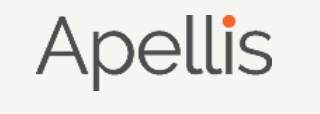Apellis releases 18-month results from phase 3 studies of pegcetacoplan for GA
New detailed, longer-term findings were presented at the 2022 ARVO meeting.
Apellis Pharmaceuticals announced Monday the detailed, longer-term results from its phase 3 DERBY and OAKS studies of intravitreal pegcetacoplan for the treatment of geographic atrophy (GA) secondary to age-related macular degeneration (AMD).
Pegcetacoplan is a targeted C3 therapy that is designed to regulate excessive activation of the complement cascade, which is part of the body’s immune system and can lead to the onset/progression of serious diseases.

The new findings were presented earlier this week at the Association for Research in Vision and Ophthalmology (ARVO) annual meeting in Denver, Colorado, by author Roger Goldberg, MD, a vitreoretinal specialist at Bay Area Retina Associates.
Monthly and every-other-month pegcetacoplan showed a continuous and clinically meaningful reduction in the growth of both extrafoveal and foveal lesions at month 18, according to an analysis.
The reported results support earlier phase 3 18-month findings that Apellis released in March.
A longer-term analysis of the primary endpoint found that pegcetacoplan continued to exhibit a strong reduction in GA lesion growth in patients with extrafoveal lesions and an improved effect in patients with foveal lesions when compared to pooled sham at month 18 (all p values are nominal), the company reported.
Additional reported findings include:
Pegcetacoplan reduced extrafoveal GA lesion growth in OAKS by 33% (p<0.0001) and 17% (p=0.0422) with both monthly and every-other-month treatment, respectively, and in DERBY by 17% (p=0.0606) and 23% (p=0.0075), respectively.
Pegcetacoplan reduced foveal GA lesion growth in OAKS by 18% (p=0.0105) and 19% (p=0.0020) with both monthly and every-other-month treatment, respectively, and in DERBY by 9% (p=0.2015) and 4% (p=0.5538), respectively.
In the combined studies, pegcetacoplan reduced extrafoveal GA lesion growth by 26% (p<0.0001) and 21% (p=0.0006) with both monthly and every-other-month treatment, respectively, and reduced foveal lesion growth by 13% (p=0.0070) and 13% (p=0.0069), respectively.
Goldberg stated that he is encouraged by the findings that show pegcetacoplan continuously reduced lesion growth over time in patients who are representative of the real-world GA population.
“These results support that we are on the brink of the first potential treatment for patients living with this relentless, progressive, and irreversible disease,” he said in a release.
At month 18, pegcetacoplan was found to continually demonstrate a favorable safety profile that was consistent with safety rates at 12 months as well as longer-term exposure to intravitreal injections, the company reported. Additionally, the combined rate of new -onset exudations at month 18 was 9.5% in the pegcetacoplan monthly, 6.2% in the every-other-month, and 2.9% in the sham groups.
The company also reported that rates of infectious endophthalmitis and intraocular inflammation continue to be consistent with other reported studies of intravitreal therapies.
Pegcetacoplan was previously granted a Fast Track designation by the US FDA for the treatment in GA.
The new data findings will be included in the New Drug Application (NDA) planned for submission to the FDA in the 2nd quarter of this year, Apellis reports.